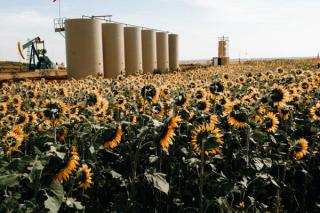
SLR sustainable finance support BII (UK development finance institution) in one of the largest transaction in the banking sector in Africa
- Client Name
- British International Investment
- Location
- Africa

Introduction
As financial institutions expand across borders, their role in promoting sustainable development becomes increasingly important. Environmental and social (E&S) risk management is no longer a peripheral concern but a central pillar of responsible banking, especially for banks operating across diverse regulatory and socio-economic contexts.
A major Moroccan bank, with assets exceeding US$30 billion and operations spanning 18 African countries, recognised the importance of aligning its Environmental and Social (E&S) governance systems with international best practice. Given its rapid growth and ambitious impact finance agenda, including green loans and women-focused lending products, the bank sought an independent, expert review of its E&S management systems and sustainable finance offerings.
To support this strategic review, the bank engaged IBIS (now SLR and hereafter referred to as SLR) to conduct a comprehensive E&S Due Diligence, with a dual focus: (1) assessing the effectiveness of its E&S risk management frameworks across its African operations, and (2) assessing the bank portfolio exposure to certain E&S risks.
Challenge
The bank faced a complex set of challenges driven by its geographic diversity, different systems based on the history of the various subsidiaries, and growing investor expectations regarding responsible finance.
Firstly, the bank needed to ensure that its E&S management system was robust, consistent, and applicable across 18 African jurisdictions, each with unique regulatory environments and varying levels of environmental and social governance. The bank had established robust E&S procedures in certain geographies, but it lacked clarity on how effectively these were embedded across its operations.
Specifically, BII sought clarity on:
- The strength and consistency of its E&S categorisation and risk screening processes of Bank of Africa
- The quality and depth of E&S due diligence conducted on transactions of Bank of Africa
- The use of E&S covenants in legal agreements of Bank of Africa with its clients
- The effectiveness of grievance mechanisms for stakeholders of Bank of Africa
- The reporting mechanisms used to monitor E&S performance at the client and portfolio levels of Bank of Africa
- The alignment of its Human Resources and Social Policies with international expectations, particularly with regard to labour rights and gender inclusion
Solution
SLR brought together a multidisciplinary team with expertise in banking operations, sustainable finance, and international E&S standards to conduct a detailed due diligence process. The engagement was structured around this core pillar:
Review of E&S Management Systems
SLR undertook a full diagnostic of the bank’s E&S management framework, including:
- Policies and procedures related to E&S risk categorisation
- Integration of E&S factors in transaction screening and approval processes
- Application of E&S due diligence checklists and sector guidelines
- Standardisation and enforcement of E&S covenants in loan agreements
- Operation and accessibility of grievance mechanisms across countries
- Quality and frequency of E&S performance reporting to internal and external stakeholders
- Review of the bank’s Human Resources and Social Policies, particularly in relation to international labour standards and diversity commitments
- Review of portfolio and E&S categorisation for Bank of Africa
Interviews were conducted with key departments in 6 countries spanning from English and French speaking Africa, including credit risk, compliance, sustainability, and product development teams, to understand the extent of system implementation across the bank’s network.
Impact
SLR’s due diligence provided the bank with a clear and actionable roadmap to enhance its E&S management practices and solidify its leadership in sustainable finance within Africa.
Key outcomes included:
- Identification of critical gaps in the application of E&S risk management across jurisdictions, along with practical, prioritised recommendations for alignment with international standards such as the IFC Performance Standards and the Equator Principles
- Strengthening of the bank’s E&S due diligence procedures, including the introduction of standardised tools and training plans for front-line staff
- Enhanced governance structures around impact finance products, including clearer eligibility criteria, improved monitoring systems, and better alignment with global green finance frameworks
- Increased internal awareness and cross-departmental coordination on E&S responsibilities
- Improved ability to demonstrate ESG integrity and impact outcomes to regulators, investors, and stakeholders
Ultimately, the engagement positioned Bank of Africa to not only meet rising ESG expectations but also to play a proactive role in financing Africa’s sustainable development. By embedding stronger E&S safeguards and impact metrics across its operations, the bank is now better equipped to manage risk, unlock green finance opportunities, and deliver meaningful outcomes across the continent.

